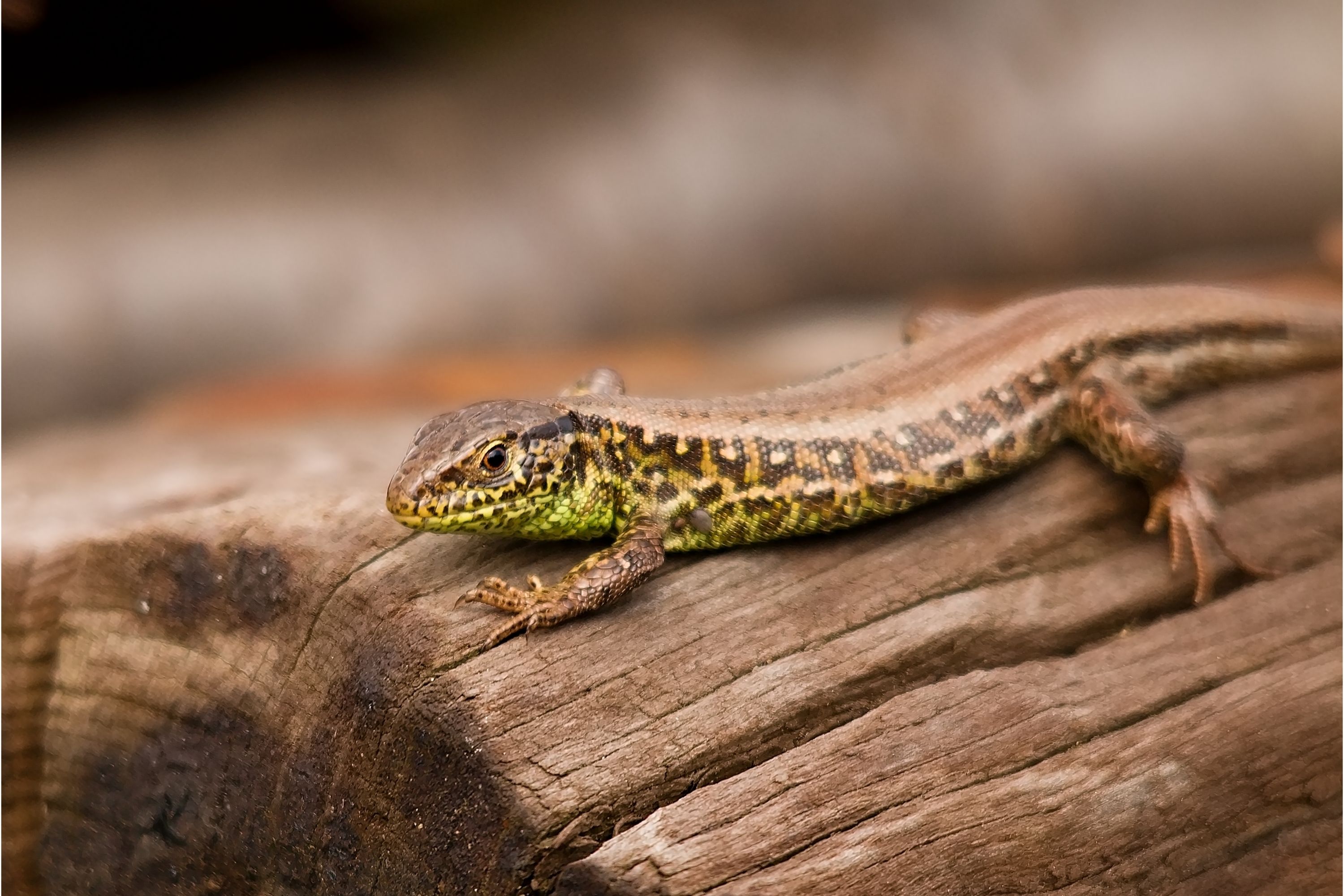Sand lizard
(Lacerta agilis)

Description
The sand lizard (Lacerta agilis) is a lacertid lizard distributed across most of Europe from France and across the continent to Lake Baikal in Russia. It does not occur in European Turkey. Its distribution is often patchy. In the sand lizard's northern populations, such as in Great Britain, it is only able to survive along coastal heathlands where the sand is hot enough to incubate their eggs. Males are known for their bright colorations and aggressive behaviors when competing for females. Their mating process is unique because of its relatively short time period and because males are generally more selective with who they mate with than females. Females typically only lay a single clutch in a year. Sand lizards spend most of their time basking, foraging, or under vegetation and prefer to live in diverse habitats. Males have their own home territories that are very wide and often overlap with other males. These males compete with each other while females have smaller home territories that neighbor each other and will sometimes share habitats with each other. They can live for up to ten years and because of this relatively long lifespan, they are sometimes subject to inbreeding and producing malformed offspring. The sand lizard is a sexually dimorphic legged lizard. In northwest Europe, both sexes are characterised by lateral and dorsal strips of ocellated (eye-shaped) markings, dark patches with pale centres. Colouration varies across their European and Russian range. Males have finer markings than females, and their flanks turn bright green during the spring mating season, fading again in the late summer. Male adults may reach a total body length of 19.3 cm, where female adults may reach 18.5 cm. It has several subspecies, the westernmost of which is L. a. agilis. In this and the other main western subspecies (L. a. argus), the dorsal stripe is thin and interrupted, or not present at all. This applies particularly to the latter subspecies, which also includes a plain red or brown-backed phase without any dorsal markings. In these two subspecies, only the flanks of the males turn green in the mating season, but in the eastern subspecies (predominantly L. a. exigua), males can be wholly green, even outside the breeding season. Most of these lizards live in Eastern Europe. They are mostly common in Poland, Czech Republic, and countries around that area.
Taxonomic tree:







